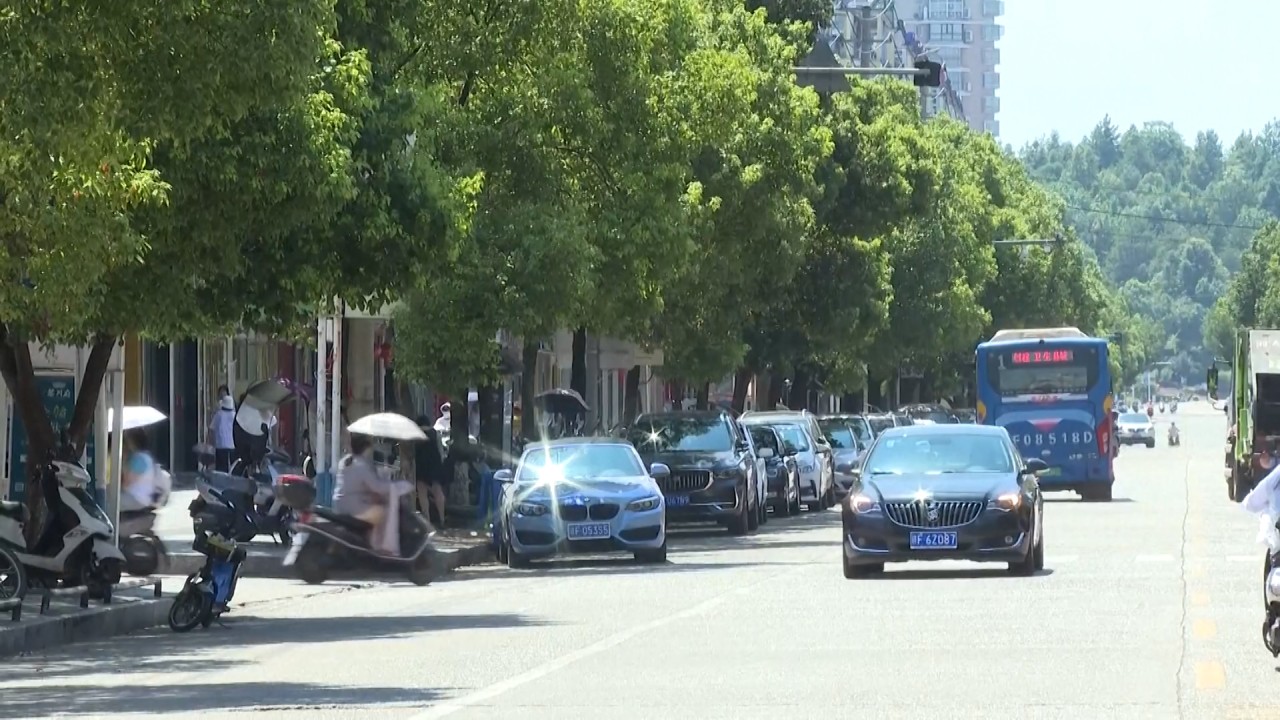
China heatwave and drought to continue, with power supply hit, shipping halted and crops at risk
- About 4.5 million sq km, or half of China’s total area, is in the grip of extreme high temperatures
- Farmers are worried about the autumn harvest amid a nationwide drought alert, as a power crunch shuts factories and sparks supply chain worries

About half of China’s landmass is reeling under the most severe drought and longest sustained period of extreme high temperatures in six decades, with no respite seen for at least a week.
Water levels in the nation’s longest river, the Yangtze, are at a record low, halting shipping over vast sections of the key waterway, while those at its biggest freshwater lake Poyang are down by 75 per cent, the lowest since records began in 1951.
The national weather bureau issued yet another heatwave red alert – the highest in a three-tier system – for southern China on Saturday, the ninth in a row and the 31st consecutive day of high-temperature warnings.
Heatwaves in central and eastern China, some of the most densely populated parts of the country, are also beating records, with sustained temperatures of over 40 degrees Celsius (104 degrees Fahrenheit) for a month.
A nationwide drought alert was issued on Friday, the first such notice in nine years.
There has been no rainfall for three weeks in farmer Cheng’s hometown of Xinghua, in the eastern province of Jiangsu. The afternoon temperature of 40 degrees Celsius is high enough to make soybean leaves wilt.
“It looks like the plants are going to die at noon. They recover a bit at night when it’s cooler, but the leaves are wilted again the next morning,” said Cheng, 70, who now fears a 30 per cent cut in his yield this year.
“The temperature can’t be high during the soybeans’ flowering stage. The ideal temperature should be around 30 degrees Celsius,” he said.
“I had never seen a severe drought like this in the whole of my life.”

Last week, Jiangsu province warned that road surface temperatures could rise to 72 degrees Celsius, raising the risk of flat tyres, state broadcaster CCTV reported.
In the southwestern metropolis of Chongqing, home to more than 31 million people, as many as 66 rivers and 25 reservoirs have run out of water. Almost a million residents and 59,000 hectares of farmland across 34 counties have been affected.
Shipping routes are closed in the middle and lower reaches of the Yangtze, from central Hunan province to Anhui in the southeast.
“Over the past month, 4.5 million sq km of the country had experienced temperatures of 35 degrees Celsius or more,” the National Meteorological Centre said on Friday. That is about half of China’s total land mass.
“Over 200 national monitoring stations have observed record highs, with temperatures reaching 45 degrees Celsius in Beipei, Chongqing,” the centre forecast, saying this round of the heatwave would last until August 25 at least.
Heatstroke cases and two deaths have been reported from five provinces, Zhejiang and Jiangsu in the east, Fujian in the southeast, Sichuan in the southwest and Henan in central China.
The extreme weather comes at a critical time for rice, soybean and other water-intensive crops ahead of the autumn harvest.
“August is the heading and flowering time for rice,” Fang Fuping, a researcher at the China Rice Research Institute, told CCTV on Thursday. “At this time, the heat has the biggest impact and it has brought about extremely unfavourable effects.”
Prolonged heat and reduced water reserves have triggered a power crunch as demand for cooling surges, shutting factories and sparking supply chain worries in the world’s largest manufacturing hub.
Several provinces have imposed power restrictions across different industries. Sichuan ordered all factories to shut down for six days, with air conditioning turned off in some office buildings and local Communist Party paper Sichuan Daily calling on government officials to take the stairs instead of lifts.
“The province’s hydropower generation capacity has fallen by more than 50 per cent,” an engineer with the State Grid Sichuan Electric Power Company said on the company website. Hydroelectric power accounts for about 80 per cent of Sichuan’s supply.
In Chongqing, outdoor advertisements, subway lights and building signs have been dimmed to save energy.
However, extreme weather may become the new norm as global warming worsens, climate experts warn.
China has been battling not just drought and heat, but also extreme rain and deadly floods in several provinces, with homes swept away and thousands displaced.
Flash floods triggered by mountain rains left seven people dead at a tourist spot in Sichuan on August 13, and killed another 18 in the northwestern province of Qinghai last week.
A United Nations scientific report has warned that a dangerous heatwave that earlier occurred in a given region once every 50 years would strike every five years if the global temperature increased by 1.5 degrees Celsius above pre-industrial levels by the end of this century. At 4 degrees of warming, this would occur almost annually.
“Extreme weather has different impacts on different sectors, and each sector should have an early warning and forecasting system in place, and take appropriate measures,” Li Zhao, a climate risk researcher at Greenpeace East Asia in Beijing, said. “This also involves cooperation between sectors.”
“Meanwhile, countries must step up efforts to reduce [greenhouse gas] emissions as soon as possible.”


